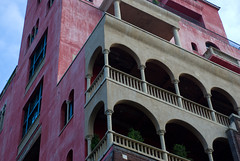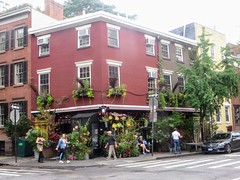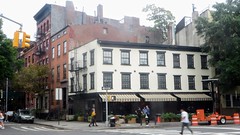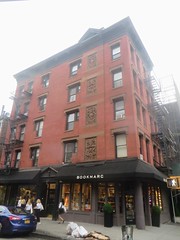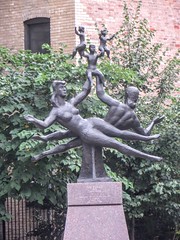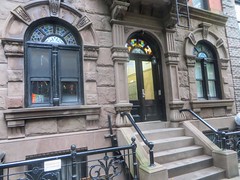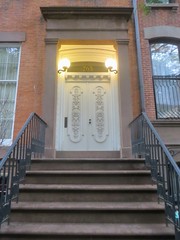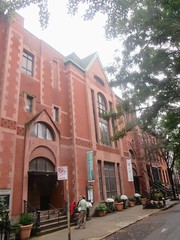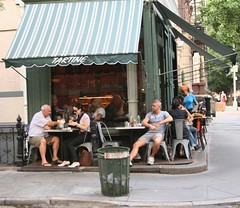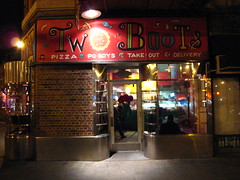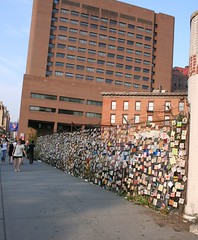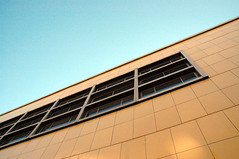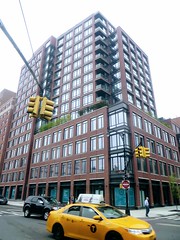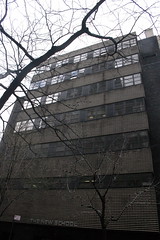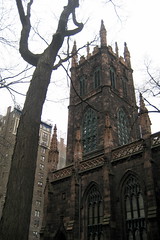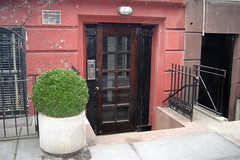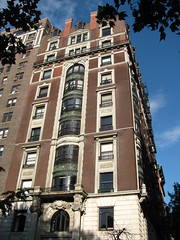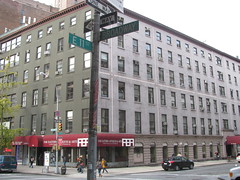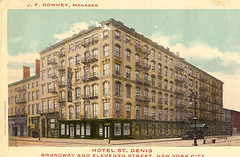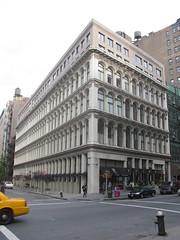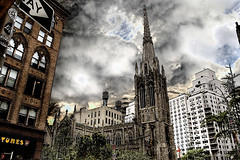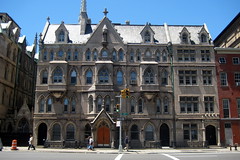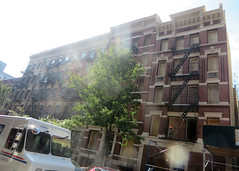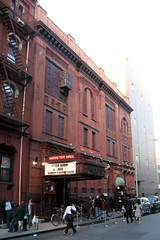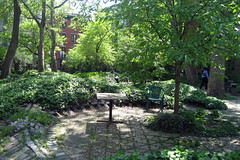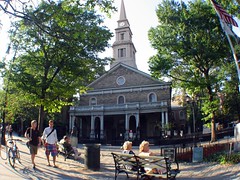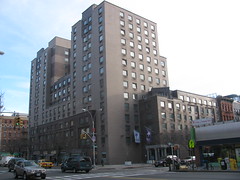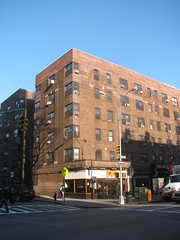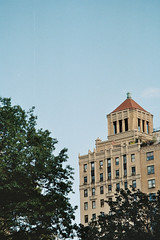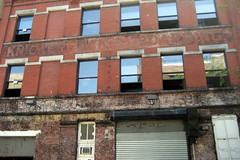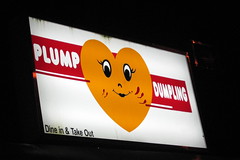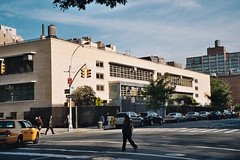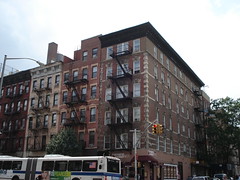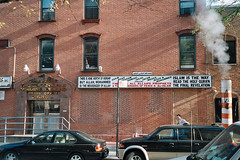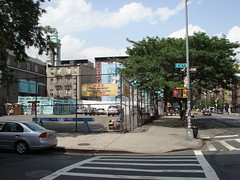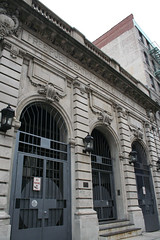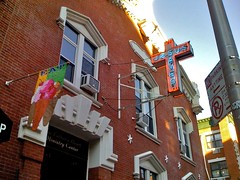South:
78 (corner): From 1993-2017, was
French Roast Cafe, 24-hour bistro in
a 1915 apartment building. There used to be
a roadhouse here called The Old Grapevine that
dated back to 1830; it was a center of
neighborhood gossip and was supposedly the
origin of the phrase "I heard it through the
grapevine." This etymology seems unlikely to me.
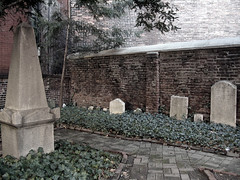
Manhattan's smallest cemetery; much of its original extent is now
under Eleventh Street. Active from 1805 to 1829.
70: The tall building next to the cemetery
was home to composer
Charles Ives from 1908
to 1911.
66: Was Enrico and Paglieri, Italian
restaurant noted in the 1939 WPA Guide.
64: New School's Theresa Lang Student Center.
In the 1910s this was the address of the
Concolo Gatti Matti (''Crazy Cat Club''),
a favorite of Djuna Barnes.
56:
Harold Ross lived here (1919-20) a few years before he
founded The New Yorker. Part of this time
he worked for the American Legion's magazine.
This was later the longtime home of poet Ned O'Gorman. Bob Dylan
was introduced to talent scout John Hammond here in 1961, who suggested
that he record some demos for Columbia Records (RAREG).
52: Once owned by Mel Brooks and Anne Bancroft,
and later rented by fake newsman Jon Stewart.
50: This was the first home of
Gerald and Sara
Murphy, on whom Fitzgerald modeled Dick and Nicole
Diver in Tender Is the Night.
48: Playwright
Oscar Wilde lived here for several
weeks after a U.S. lecture tour in 1882.
46:
11th Street Pediatrics--taking
care of my child since her birth.
40: Gerald and Sara Murphy (see No. 50,
above) were married
here, at her parents' house.
32:
Vincent Pepe, redeveloper of Minetta Lane,
committed suicide in 1935 by hanging himself from the bannister
here after being accused the year before
of ripping off an investor.
30: Pepe's house, where he was living at the
time of his death.
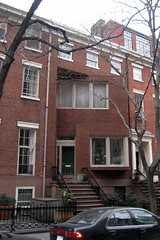
18: Modern-looking, odd-angled house was
originally built in 1845,
one of four houses on the block built by Henry
Brevoort Jr. for his children; it
was later the home of Charles Merrill (of
Merrill Lynch), whose son, the poet
James Merrill, was born here. In 1970,
it was a hideout for the radical
Weathermen group
(including Kathy Boudin and William Ayers), who were using it as
a bomb factory. On March 6, 1970, 60 sticks
of dynamite accidentally exploded, killing
three group members and virtually destroying
the house. It was rebuilt in modernist style
in 1978.
16: Actor
Dustin Hoffman lived here in the 1960s, and
witnessed the Weathermen explosion.
14-26: Built by local landowner Henry Brevoort (1844)
Judge Crater House
Corner (40 5th Ave):
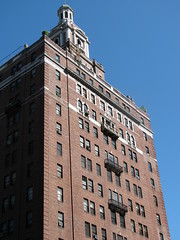 This 17-story
brown brick building,
with something resembling Independence Hall on top, is a
Van Wart & Wein design finished 1929.
Judge Joseph F. Crater, who inexplicably disappeared
in 1930, lived on the fourth floor of
this building at the time he went missing. "Almost
five months after he vanished and after several police searches, three
envelopes with cash, insurance policies and the
judge's will mysteriously turned up in the bedroom."--All Around the
Town.
This 17-story
brown brick building,
with something resembling Independence Hall on top, is a
Van Wart & Wein design finished 1929.
Judge Joseph F. Crater, who inexplicably disappeared
in 1930, lived on the fourth floor of
this building at the time he went missing. "Almost
five months after he vanished and after several police searches, three
envelopes with cash, insurance policies and the
judge's will mysteriously turned up in the bedroom."--All Around the
Town.
An
earlier building with this number
was an early Second Empire house built in 1857, designed by
Calver Vaux, co-architect of Central Park, for John A.C. Gray,
one of the park's commissioners. Later, from 1866-71, it was the home of
reaper tycoon Cyrus McCormick. Sara Wiborg and Gerald Murphy, the
models for Nicole and Dick Diver in Fitzgerald's Tender Is the
Night, were
wed here in 1915. And President John F. Kennedy's personal
physician, Janet Travell, was living here as a young woman in 1925.
| 